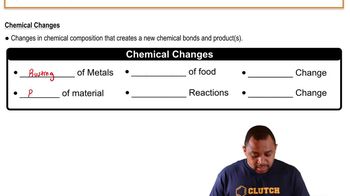Here are the essential concepts you must grasp in order to answer the question correctly.
Half-Life
Half-life is the time required for the concentration of a reactant to decrease to half of its initial value. In chemical kinetics, it is a crucial parameter that helps in understanding the rate of a reaction. The half-life can vary depending on the order of the reaction; for first-order reactions, it remains constant, while for second-order reactions, it depends on the initial concentration.
Recommended video:
Reaction Order
The order of a reaction refers to the power to which the concentration of a reactant is raised in the rate law. It provides insight into how the rate of reaction is affected by the concentration of reactants. For example, a first-order reaction has a linear relationship between concentration and rate, while a second-order reaction has a quadratic relationship, influencing how half-life is calculated.
Recommended video:
Concentration Change
Concentration change refers to the variation in the amount of a substance in a given volume over time during a chemical reaction. Understanding how concentration decreases allows for the calculation of time intervals, such as how long it takes for a reactant's concentration to drop from one value to another. This concept is essential for determining the kinetics of a reaction and its half-life.
Recommended video:




